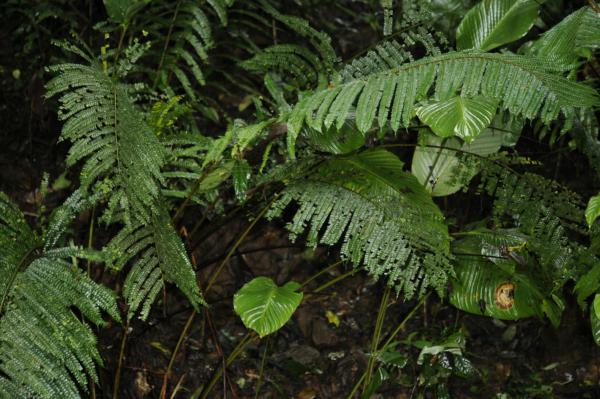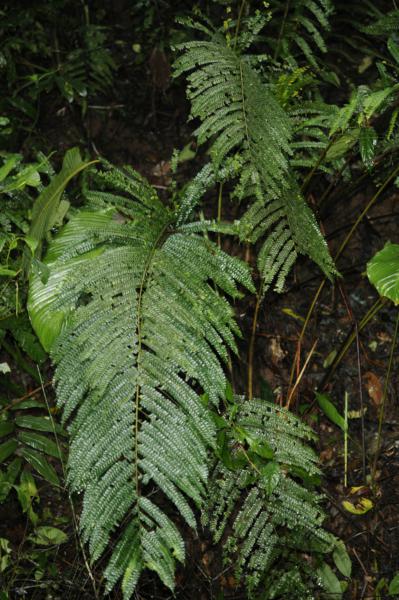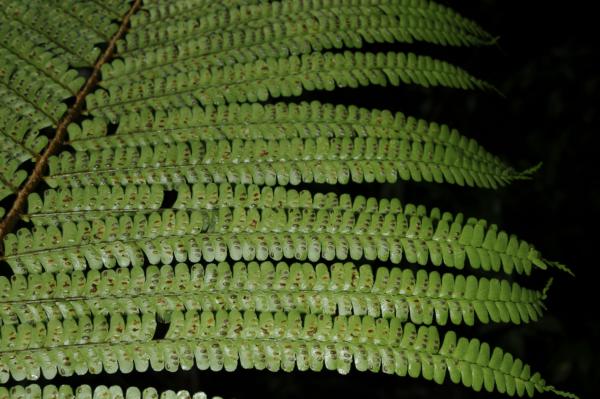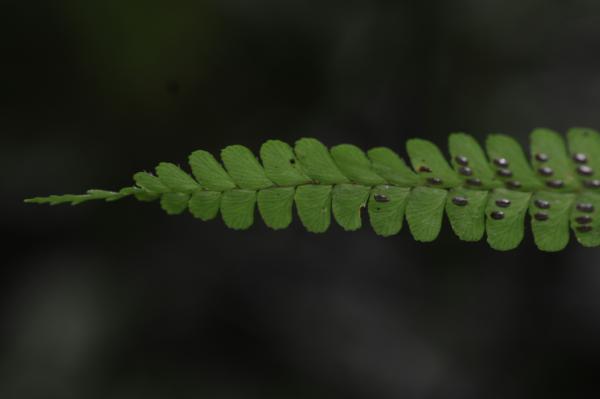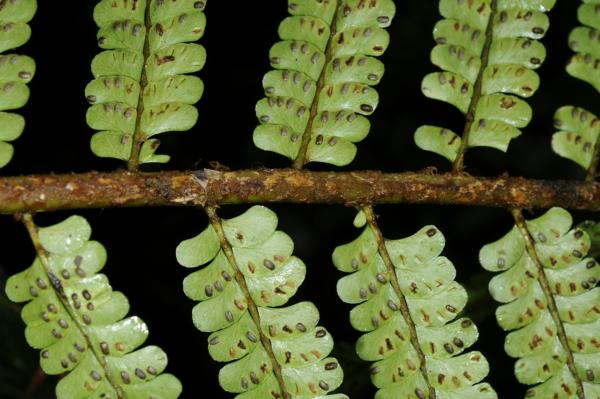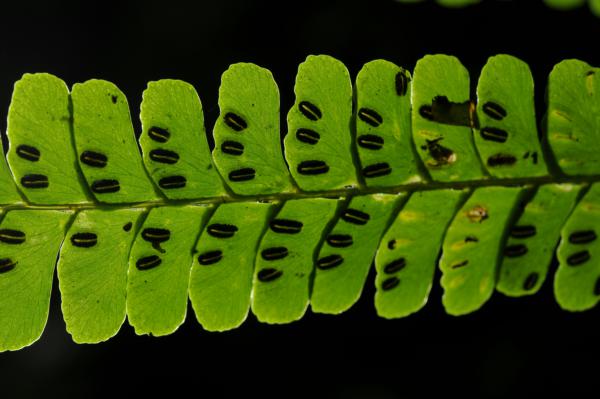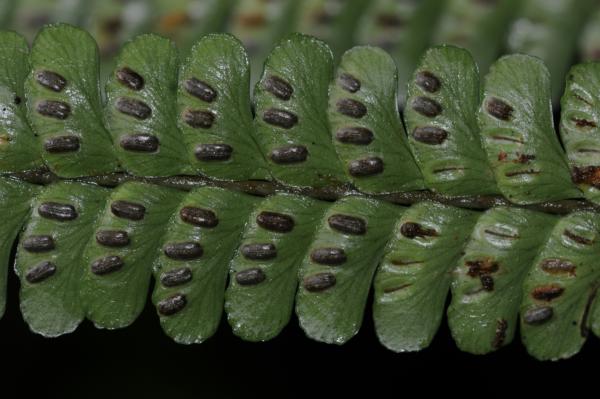
Didymochlaena truncatula (Sw.) J.Sm.
Family
Dryopteridaceae
Nomenclature
Didymochlaena truncatula (Sw.) J.Sm., J. Bot. 4: 196. 1841; Tardieu & C.Chr., Fl. Indo-Chine 7(2): 331, f. 36.4 & 36.5. 1941; Holttum, Rev. Fl. Malaya ed. 1, 2: 483, f. 285. 1955 [‘1954’]; Tagawa & K.Iwats., SouthE. Asian Stud. 5: 93: 1967; Tagawa & K.Iwats., Acta Phytotax. Geobot. 23: 55. 1968; Tagawa & K.Iwats., Fl. Thailand 3: 331, f. 28.8–28.11. 1988; Boonkerd & Pollawatn, Pterid. Thailand: 157, 202. 2000. – Aspidium truncatulum Sw., Schrad. J. Bot. 1800(2): 36. 1801. – Didymochlaena lunulata auct. non (Burm.) Desv.: Bedd., Handb. Ferns Brit. India: 199, f. 99. 1883.
Description
Rhizome massive, ascending to erect, bearing a group of fronds like a small tree fern, sometimes more than 10 cm long, covered densely with scales; scales up to 20 by 5 mm, brown or sometimes black-brown in central portion, glabrous, entire. Stipes stramineous or dark, very densely covered with scales and downy hairs, up to 70 cm long, grooved on adaxial surface. Laminae oblong or narrower, up to 100 by 40 cm, bipinnate; rachis densely covered with narrower scales and downy hairs; pinnae 20 or more pairs, joined to rachis, linear-lanceolate, acuminate at apex, subtruncate at base, up to 25 by 4 cm; pinna-rachis grooved, grooves not decurrent into those on rachis; leaflets jointed to rachis, uniform in size and form throughout, nearly oblong, about 1.7 by 0.8 mm, rounded at apex, entire or very slightly serrate at margin; thick; dark green but brown in dried specimens, glabrous, bearing distinct spines at base of leaflets. Sori terminal on anterior branch of veins, elongate, somewhat hollowed; indusia glabrous , about 2 mm long.
Distribution in Thailand
NORTHERN: Chiang Mai, Chiang Rai, Nan; SOUTH-EASTERN: Chanthaburi; PENINSULAR: Ranong, Nakhon Si Thammarat, Trang, Phangnga, Yala.
Wider Distribution
Pantropical.
Ecology
On humus-rich mountain slopes in dense evergreen forests at medium or high altitudes.
Proposed IUCN Conservation Assessment
Least Concern (LC). This species is particularly widespread and not under any known threat.
Voucher specimens - Thailand
Middleton et al. 5605, Nan, Doi Phu Kha National Park (E).
Habit
Frond
Pinnae
Pinna tip
Rachis and pinna bases
Venation
Undersurface of pinnules and sori
Site hosted by the Royal Botanic Garden Edinburgh. Content managed by Stuart Lindsay, Gardens by the Bay, Singapore and David Middleton, Singapore Botanic Gardens. Last updated 24 January 2012
